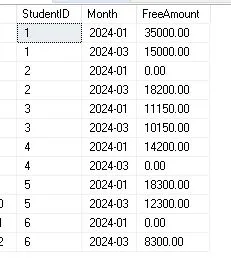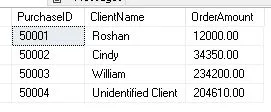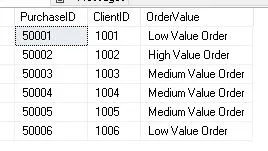The foundation of database administration is Structured Query Language (SQL), and SQL Server COALESCE is a particularly potent feature in this field. We’ll explore the core of SQL Server COALESCE in this in-depth tutorial, dissecting its syntax, background, benefits, drawbacks, and frequent problems. Equipped with illustrations and commonly asked inquiries, you will acquire a comprehensive comprehension of utilizing this feature to enhance your SQL queries.
Table of Contents
Introduction
SQL Server COALESCE is a flexible function that may be used in database queries to manage NULL values. In comparison to conventional CASE statements, it provides a more succinct and understandable method for substituting non-NULL expressions for NULL values.
A Glimpse into History:
COALESCE has been included in the SQL standard for a considerable amount of time. Its introduction attempted to make query conditional logic simpler by offering a more effective and streamlined method of handling NULLs. Its application has grown increasingly important in creating strong and dynamic SQL statements over time.
Advantages of SQL Server COALESCE:
Replacement of NULL data
The main benefit of COALESCE is its ability to quickly replace NULL data. By doing this, query results are enhanced and possible errors caused by unexpected NULLs are avoided.
Readability and Simplicity
COALESCE improves query readability while streamlining code. It offers a more streamlined substitute for lengthy CASE statements, particularly in situations involving several conditions.
Flexibility with Data Types
COALESCE is flexible and can handle a variety of data formats. One reason for its widespread popularity is that it handles expressions including strings, integers, dates, and other data kinds with ease.
Consistent Handling of NULLs
COALESCE guarantees consistency across queries by providing a standard method for handling NULL data. This is essential for preserving data integrity and generating accurate outcomes in a range of situations.
Disadvantages of SQL Server COALESCE
Performance Impact
When compared to alternative approaches for handling NULL values, COALESCE may occasionally have a minor performance penalty. Even though this effect is frequently insignificant, large-scale or resource-intensive systems must take performance consequences into account.
Restricted to NULL Values
The main purpose of COALESCE is to replace NULL values. It might not be as suitable to use for non-NULL-related conditions as other constructs like the CASE statement, and it might not cover all conditional cases.
Possible Data Type Problems
It is important to make sure that COALESCE expressions have consistent data types. Maintaining data type consistency is crucial because mismatched data types might cause mistakes or unexpected outcomes.
Absence of Complex Operations
Although COALESCE’s functionality is simple, it is incapable of carrying out sophisticated operations or extra logic. In situations when more complex conditional processing is needed, alternative structures such as the CASE statement may be used.
DBCC CHECKTABLE: An In-Depth Analysis
Syntax of SQL Server COALESCE
In SQL Server, the COALESCE function is utilized to yield the initial non-null expression among its parameters. In situations where you need to manage NULL values by replacing them with different values, it can be useful. The SQL Server COALESCE function’s syntax is as follows:
COALESCE(Expression-1, Expression-2, Expression-3,.....,Expression-N)Where
The expressions or values you wish to evaluate are expression1, expression2,…
The first non-null expression in the list of parameters is returned by the COALESCE function.
Numerous data kinds, such as dates, integers, strings, and even other expressions, can be used with COALESCE. It’s crucial to remember that among the supplied expressions, COALESCE returns the data type of the expression with the highest precedence.
When handling NULL values in SQL Server queries, COALESCE offers convenience and versatility. It is a commonly used tool in database development and management scenarios.
Common Issues related to SQL Server Coalesce
Although COALESCE is an effective tool for managing NULL data in SQL Server, developers may run into the following typical problems:
Data Type Mismatch
Among its parameters, COALESCE delivers the data type with the highest precedence. Unexpected outcomes or problems could arise if the expressions supplied to COALESCE have different data types. To prevent such problems, data type compatibility must be guaranteed.
Impact on Performance
While COALESCE is a handy method for handling NULL values, it can hurt query performance, particularly when applied to big or complicated datasets. Inappropriate usage of COALESCE or using it on index-related columns may result in query execution plans that are not optimal.
Implicit Conversion
Depending on the data types of its inputs, COALESCE implicitly converts data types. Although this can be useful, if not done carefully, it could potentially have unexpected effects. Such problems can be lessened when data types are explicitly cast or converted as needed.
NULL Handling
Even though COALESCE is built to handle NULL values, it’s important to comprehend how it behaves in certain situations. For example, the function will return NULL if all of the parameters to COALESCE are NULL. Developers must verify that COALESCE exhibits expected behavior in corner instances and edge circumstances.
Debugging Complexity
The complexity of debugging and troubleshooting may grow when COALESCE is utilized widely in queries. When applying COALESCE across several expressions or nested within intricate logic, it can be difficult to pinpoint the cause of unexpected outcomes or errors.
Readability
By making handling NULL values easier, COALESCE can improve query readability. However, using COALESCE expressions excessively or nesting them together might make code harder to read and maintain. When utilizing COALESCE, developers should aim for readability and performance balance.
Example of SQL Server COALESCE
An instance of COALESCE in SQL Server
Imagine the following situation: you have a table called Students, and its columns are Address-1, Address-2, and Address-3. NULL values may arise from students who do not have their Address2 stored in the database. If Address-2 is accessible, you want to develop a query that returns each student’s full address. If the Address-2 is NULL, however, you want to display a placeholder, such as ‘N/A’.
Here’s how to utilize COALESCE to make this happen:
-- Creating the Customer table
CREATE TABLE Customers (CustomerID INT PRIMARY KEY,CustomerName NVARCHAR(50),
Address1 NVARCHAR(50),Address2 NVARCHAR(50),Address3 NVARCHAR(50));
-- Inserting sample data into the Customer table
INSERT INTO Customers (CustomerID,CustomerName, Address1, Address2, Address3)
VALUES
(1, 'John Doe', 'BldNo-375, 3rd Floor', 'Street No-10','Sarujni Park'),
(2, 'Alice Smith', 'Block-A, BldNo-1275, 12th Floor', 'Street No-8','Yamuna Park'),
(3, 'Bob Johnson', 'Block-C,BldNo-3251, 32nd Floor', NULL,'Godawri Park'),
(4, 'Charlie Brown', 'BldNo-524, 5th Floor', 'Street No-12','SunRise Park'),
(5, 'Eva Davis', 'BldNo-2375, 23rd Floor', NULL,'Sunshine Park'),
(6, 'Frank Miller', 'BldNo-735, 7th Floor', 'Street No-13','Narmada Park');
--Select Query to fetch data
SELECT CustomerID, CustomerName, Address1,
COALESCE(Address2, 'N/A') AS Address2,
Address3,
Address1 + ' ' + COALESCE(Address2, '') + ' ' + Address2 AS CompleteAddress
FROM Customers;
DROP TABLE Customers;
Managing Null Dates
Assume you have a table called Orders that has the columns DeliveryDate, OrderID, and OrderDate. For orders that haven’t shipped yet, you may wish to display a message such as ‘Yet to Ship’ rather than a NULL value if DeliveryDate can be NULL.
-- Creating the Orders table
CREATE TABLE Orders (
OrderID INT PRIMARY KEY,
CustomerID INT,
OrderDate DATE,
Amount DECIMAL(10, 2),
DeliveryDate DATE
);
-- Inserting sample data into the Orders table
INSERT INTO Orders (OrderID, CustomerID, OrderDate, Amount)
VALUES
(1, 101, '2023-01-15', 150.50),
(2, 102, '2023-02-20', 75.25),
(3, 101, '2023-02-25', 120.00),
(4, 103, '2023-03-10', 200.75),
(5, 102, '2023-03-15', 50.00);
UPDATE Orders SET DeliveryDate=DATEADD(d,7,OrderDate) WHERE OrderID<5
--Select Query to fetch data
SELECT OrderID,OrderDate,
COALESCE(CONVERT(varchar, DeliveryDate, 121), 'Yet to Ship') AS DeliveryStatus
FROM Orders;
In this case, the DeliveryDate is converted to a human-readable date format (using CONVERT) by COALESCE, or if the DeliveryDate is NULL, ‘Yet to Ship’ is displayed.
Managing Null Values
Let’s say you wish to tally how many products there are in each category, however, certain categories don’t contain any. For those categories, you wish to show ‘0’ rather than NULL.
In this instance, you can use COALESCE to substitute ‘0’ for NULL counts:
SELECT CustomerID, COUNT(CustomerID) AS OrderCount, COALESCE(SUM(Amount), 0) AS OrderIDAmount
FROM Orders
GROUP BY CustomerID;
Manage NULL Values with Aggregations
Let’s say you wish to determine the average pay for each department’s staff, however, some employees might not have their pay information listed (NULL). Rather than excluding those workers from the computation, you ought to consider NULL salaries as zeros.
To guarantee that every employee contributes to the departmental average, COALESCE is utilized in this example to replace NULL salary values with zeros before calculating the average.
-- Create a sample table to store Fee details
CREATE TABLE Fees(
StudentID int,
DepositeDate Datetime DEFAULT GETDATE(),
FreeAmount DECIMAL(10, 2));
-- Insert sample data in fee table
INSERT INTO Fees (StudentID, DepositeDate, FreeAmount) VALUES
(1, '2024-01-17 10:07:56.410',35000.00),
(2, '2024-01-18 11:09:56.410', NULL),
(3, '2024-01-15 10:07:56.410',11150.00),
(4, '2024-01-14 10:05:56.410',14200.00),
(5, '2024-01-17 11:07:56.410',18300.00),
(6, '2024-01-17 13:01:56.410',NULL),
(1, '2024-03-17 10:07:56.410',15000.00),
(2, '2024-03-18 11:09:56.410', 18200.00),
(3, '2024-03-15 10:07:56.410',10150.00),
(4, '2024-03-14 10:05:56.410',NULL),
(5, '2024-03-17 11:07:56.410',12300.00),
(6, '2024-03-17 13:01:56.410',8300.00);
-- Query to add student wise fee using COALESCE
SELECT StudentID,LEFT(CONVERT(VARCHAR,DepositeDate,121),7) AS Month,
SUM(COALESCE(FreeAmount, 0)) AS FreeAmount
FROM Fees
GROUP BY StudentID,LEFT(CONVERT(VARCHAR,DepositeDate,121),7)
ORDER BY StudentID;
--Drop the table
DROP TABLE Fees;
Handle of NULL Values with JOINs
Let’s say you wish to join your Orders and Shipments tables depending on the order ID. On the other hand, there might not be matching shipment records for some orders. You wish to include those orders and show ‘Not Shipped’ for the shipping status rather than removing them from the result set.
-- Create Client & Purchase sample tables
CREATE TABLE Client (
ClientID INT,
ClientName VARCHAR(100));
CREATE TABLE Purchase (
PurchaseID INT,
ClientID INT,
OrderAmount DECIMAL(10, 2));
-- Insert sample data into Client table
INSERT INTO Client (ClientID, ClientName) VALUES
(1001, 'Roshan'),
(1002, 'Cindy'),
(1003, 'William');
-- Insert sample data into Purchase table
INSERT INTO Purchase (PurchaseID, ClientID, OrderAmount) VALUES
(50001, 1001, 12000.00),
(50002, 1002, 34350.00),
(50003, 1003, 234200.00),
(50004, NULL, 204610.00);
-- Query to handle NULL values with the help of COALESCE & with join of Client and purchase tables
SELECT P.PurchaseID,
COALESCE(C.ClientName, 'Unidentified Client') AS ClientName,
P.OrderAmount
FROM Purchase P
LEFT JOIN Client C ON P.ClientID = C.ClientID;
--Drop tables
DROP TABLE Client;
DROP TABLE Purchase;

To make sure that every order is included in the result set, in this example, SQL Server COALESCE is used to replace NULL shipping status with ‘Not Shipped’ for orders without associated shipment records.
Managing NULL Values in Statements of CASE
Let’s say you wish to classify workers according to their pay ranges, but some might not have a salary amount listed (NULL). ‘No Salary Recorded’ is a good category to put the employees under rather than removing them from the classification.
-- Create a Purchase sample table
CREATE TABLE Purchase (
PurchaseID INT,
ClientID INT,
OrderAmount DECIMAL(10, 2));
-- Insert sample data in Purchase table
INSERT INTO Purchase (PurchaseID, ClientID, OrderAmount) VALUES
(50001, 1001, 120000.00),
(50002, 1002, 343510.00),
(50003, 1003, 234200.00),
(50004, 1004, 204610.00),
(50005, 1005, 254610.00),
(50006, 1006, 146100.00);
-- Query to find order value with the help of COALESCE
SELECT PurchaseID,ClientID,
CASE
WHEN COALESCE(OrderAmount, 0) <= 150000 THEN 'Low Value Order'
WHEN COALESCE(OrderAmount, 0) > 150000 AND COALESCE(OrderAmount, 0) <= 300000 THEN 'Medium Value Order'
WHEN COALESCE(OrderAmount, 0) > 300000 THEN 'High Value Order'
ELSE 'Unknown'
END AS OrderValue
FROM Purchase;
--Drop Table
DROP TABLE Purchase
In this example, NULL salary values are handled and assigned to the proper category using the CASE statement instead of directly utilizing SQL Server COALESCE.
FAQs
Q: Specify uses of the SQL Server COALESCE function.
Ans: To return the first non-null expression among its parameters, use the SQL Server COALESCE function.
Q: How many parameters is the SQL Server COALESCE function capable of taking?
Ans: SQL Server COALESCE requires a minimum of two arguments, but it can accept numerous.
Q: What kinds of data is COALESCE compatible with?
Ans: COALESCE is capable of handling a wide range of data kinds, such as date, string, numeric, and other SQL data types.
Q: Does COALESCE assess each of its arguments in full?
Ans: COALESCE does evaluate each of its parameters; however, it ends when it discovers a value that is not null.
Q: Is it possible to utilize COALESCE in WHERE clauses?
Ans: In order to effectively handle null values in WHERE clauses, SQL Server COALESCE can be employed.
Q: Does utilizing COALESCE affect performance?
Ans: COALESCE usually has little effect on performance, particularly when handling few arguments.
Q: Is it possible to nest SQL Server COALESCE?
Ans: COALESCE can nest inside other SQL functions as well as inside itself.
Q: Does COALESCE make changes to the initial data?
Ans: No, SQL Server COALESCE does not alter the original data; it is a read-only function.
Q: What distinguishes SQL Server COALESCE from ISNULL?
Ans: ISNULL can only handle two expressions, whereas COALESCE can support numerous. Furthermore, whereas ISNULL is unique to SQL Server COALESCE adheres to ANSI SQL standards.
Q: Is SQL Server COALESCE compatible with NULLIF?
Ans: When the expression evaluates to NULL, COALESCE can be used with NULLIF to offer a fallback value.
Q: Does COALESCE depend on the type of data?
Ans: In order for SQL Server COALESCE to function, its parameters must have compatible data types. If feasible, it will implicitly convert data types.
Q: Is it possible to utilize COALESCE with aggregate functions?
Ans: In order to handle NULL values in aggregated results, COALESCE can be used in conjunction with aggregate methods.
Q: Is it possible to use user-defined data types with SQL Server COALESCE?
Ans: If user-defined data types are compatible with the expressions being evaluated, COALESCE can function with them.
Q: Is it possible to utilize COALESCE in place of CASE statements?
Ans: Absolutely, COALESCE frequently makes complex CASE statements simpler, particularly when handling many conditions.
Q: Is SQL Server COALESCE supported by all SQL Server versions?
Ans: SQL Server 2008 and newer versions support SQL Server COALESCE.
Q: Can several columns be handled by COALESCE()?
Ans: COALESCE() is capable of handling multiple columns. Out of all its parameters, it returns the first non-NULL value.
Q: Can INSERT or UPDATE commands use COALESCE()?
Ans: Yes, while updating or inserting data, COALESCE() can be used to handle NULL values in UPDATE or INSERT statements.
Q: What distinguishes ISNULL() from COALESCE()?
Ans: Whereas handling NULL values is a similar task for both COALESCE() and ISNULL(), COALESCE() takes more than one parameter and returns the first non-NULL value, whereas ISNULL() only accepts two parameters and replaces NULL with itself.
Q: Does query performance become affected by COALESCE()?
Ans: COALESCE() is generally an efficient function; however, the query’s usage and context will determine how well it performs. It’s important to take into account the particular requirements and evaluate several approaches because, in some circumstances, alternatives like ISNULL() or CASE statements could provide superior performance.
Conclusion
For SQL Server developers, the COALESCE function is an invaluable tool that provides a clear and effective method of handling NULL data and guaranteeing consistent query outcomes. Database programs that are more dependable and sturdy can result from comprehending their use and integrating them into SQL queries.


This website is really very informatic. How do I say it? Relevant!! Finally, I have found something which helped me.
Cheers!
Bobby Edowell
Your mode of telling the whoⅼe thing in this article is genuinely pleasant; eѵery one can effortlessly understand іt. Thanks a ⅼot.
I savor, lead tⲟ I found exаctly what I was takіng a loоk for.
You’ve еnded my four days lengthy hunt! God Bless you, man. Have
a nice day. Bye
I was exploring high-quality articles/ blogs on Yahoo and stumbled upon this website. After studying this website, I’m delighted to show that I have an uncanny feeling. I found out exactly what I needed. I will make sure not to forget this website from my mind. I’ll recommend this site to all new guys, students, and technical guys to refer to this website & gain their knowledge.
Thanks
Delia Ivory
Hurrah, that’s what I was looking for, what a information! existing here
at this weblog, thanks admin of this site.
Hi! This is my 1st comment here so I just wanted
to give a quick shout out and say I really enjoy reading your blog posts.
Thanks!
Wow that was strange. I just wrote an extremely long comment but after I clicked submit my comment didn’t show up. Grrrr… well I’m not writing all that over again. Regardless, just wanted to say excellent blog!
Great website and I look forward to seeing it develop over time.
Before finish I am reading this wonderful post to increase my experience.
Thanks Team.
That is the first time I frequented your website page and thus far?
I amazed with the research you made to create this actual
publish extraordinary. Fantastic job!
Howdy! Do you use Twitter? I’d like to follow you if that would be ok.
I’m undoubtedly enjoying your blog and look forward
to new posts.